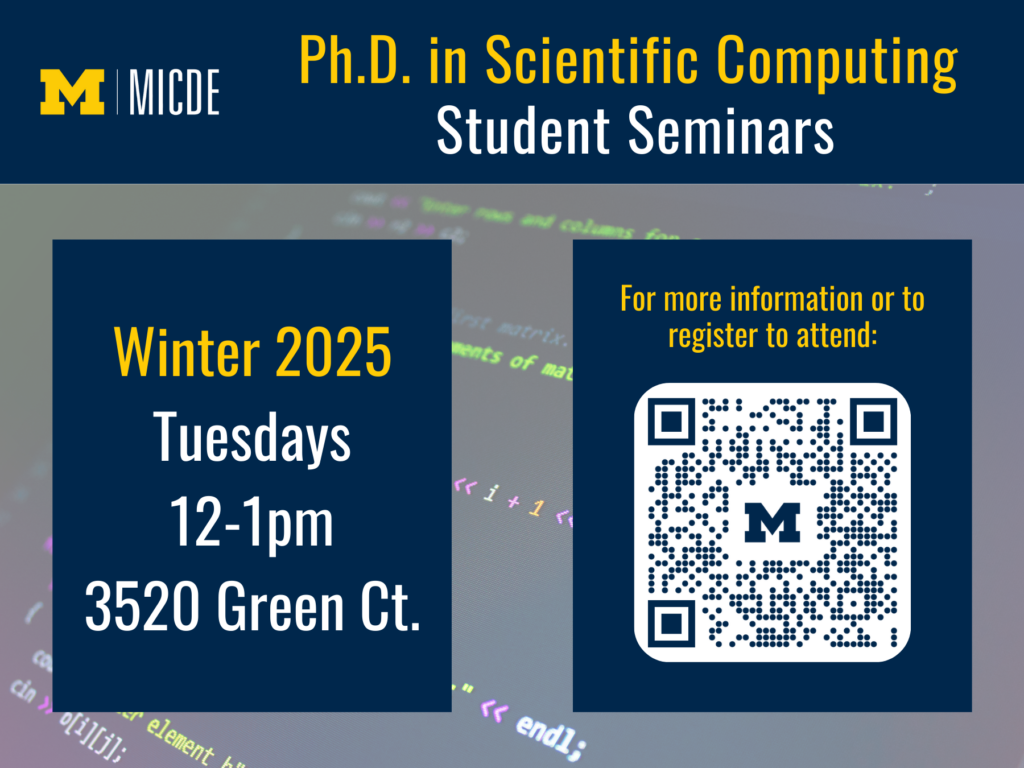Events

- This event has passed.
PhD Seminar: Meichen Liu
December 1, 2022 @ 4:00 pm - 5:00 pm
Venue: Weiser Hall, 6th Floor, 619
The Ph.D. in Scientific Computing program is intended for students who will make extensive use of large-scale computation, computational methods, or algorithms for advanced computer architectures in their doctoral studies. This seminar series showcases the breadth of research covered by the program.
Featured Speakers:
 Meichen Liu, PhD Candidate, Earth and Environmental Science and Scientific Computing
Meichen Liu, PhD Candidate, Earth and Environmental Science and Scientific Computing
She works with Professor Jeroen Ritsema in the department of Earth and Environmental Sciences. Her research involves characterizing earthquake sources as well as imaging structures in deep Earth.
Influence of shear wave velocity heterogeneity on SH-wave reverberation imaging of the mantle transition zone
We use the top-side shear wave reflection Ssds as a probe for mapping the depths of the mantle transition zone (MTZ) beneath the contiguous US. Using a common-reflection point (CRP) mapping approach, we observe that the MTZ are about 40–50 km deeper beneath the western United States than the central-eastern United States if based on the 1-D Earth wave velocity model (Preliminary Reference Earth Model). However, the east-to-west deepening of the MTZ disappears in the CRP image if we account for 3-D shear wave velocity variations in the mantle according to global tomography. In addition, from spectral-element method synthetics, we find that ray theory overpredicts the traveltime delays of the reverberations. Undulations of the MTZ are underestimated when their wavelengths are smaller than the Fresnel zones of the wave reverberations in the MTZ. Therefore, modelling of layering in the upper mantle must be based on 3-D reference structures and accurate calculations of reverberation traveltimes.
This event is part of MICDE’s seminar series featuring Ph.D. students in the Scientific Computing program. This series is open to all. University of Michigan faculty and students interested in computational and data sciences are encouraged to attend.
Questions? Email MICDE-events@umich.edu


